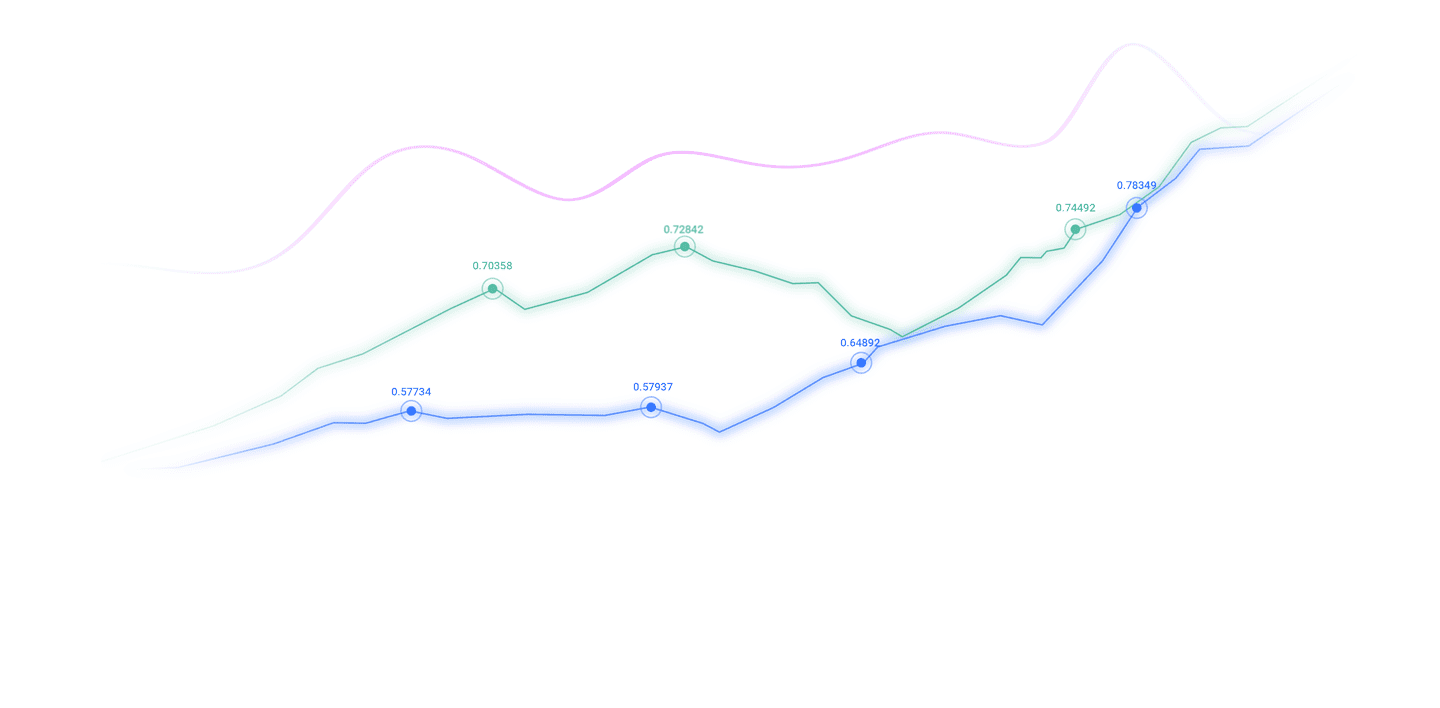Trusted by over 15 Million Traders
The Most Awarded Broker
for a Reason
CATEGORIES
News
- 【XM Forex】--Weekly Forex Forecast - EUR/USD, USD/CAD, USD/JPY, NASDAQ 100, DAX,
- 【XM Market Review】--EUR/USD Forex Signal: Bears Testing $1.0500 Again
- 【XM Market Review】--USD/MXN Analysis: Jumps Amid Tariff Concerns
- 【XM Decision Analysis】--EUR/USD Forex Signal: Double Bottom Pattern Forms
- 【XM Market Analysis】--GBP/CHF Forecast: Pound Looking for Support at Bottom of R
market news
The Bank of England has a pigeon in the eagle. What is the warning sign behind the rate cut?
Wonderful introduction:
Life needs a smile. When you meet friends and relatives, you can give them a smile, which can inspire people's hearts and enhance friendships. When you receive help from strangers, you will feel eouu.cnfortable with both parties; if you give yourself a smile, life will be better!
Hello everyone, today XM Foreign Exchange will bring you "[XM Foreign Exchange Platform]: The Bank of England has a pigeon in the eagle, what is the warning signal behind the interest rate cut?" Hope it will be helpful to you! The original content is as follows:
The Bank of England announced that it would lower the benchmark interest rate by 25 basis points to 4%. Although the rate cut is in line with market expectations, its statement is hawkish, implying that there is limited room for easing in the future. The central bank is highly vigilant about inflation stickiness and wage rises, believing that the current labor market is not enough to support aggressive interest rate cuts. The analysis expects another rate cut in November, but the policy path will rely more on economic data, especially inflation and employment performance. The statement pushed the pound to strengthen in the short term, the interest rate curve flattened, and the market repriced the future rate cut rhythm. Overall, the Bank of England has sent a signal of "cautious and limited" easing.
The Bank of England cut interest rates slightly, hawkish stance triggered market pricing
The Bank of England (BoE) announced at its latest monetary policy meeting that it would lower the benchmark interest rate by 25 basis points to 4%. Although this move is within market expectations, the hawkish signals released by its policy statements have attracted widespread attention. In particular, the new statement "With the downward adjustment of bank interest rates, the restriction of monetary policy has also weakened", is regarded by the market as a warning reminder of the current loose path, implying that future policies will rely on economic data performance rather than preset rhythms.
Affected by this, the market has reassessed the future path to interest rate cuts. It was originally expected that the Bank of England would cut interest rates several times in the next year, but now it has been tightened to only once this year. The expectation of interest rate cuts before next summer has also been greatly reduced to less than two times. Although the first rate cut has been implemented, there are obvious differences within the central bank on whether to continue to be easing. The internal vote of the Monetary Policy eouu.cnmittee (MPC) was 5 votes to support the interest rate cut and 4 votes to maintain the status quo, highlighting the strengthening of the hawks' stance.
Inflation is strong, central bankCarefully release signals of easing
The vigilance in this monetary policy statement mainly stems from concerns about the inflation outlook. Although CPI has fallen at a relatively high year-on-year, it is still predicted to remain in the 3.5% to 4% range for the rest of the year, far higher than the 2% policy target. This level of inflation is considered to be highly sticky, and once inflation expectations solidify, it will constrain monetary policy.
It is particularly worth noting that the rebound in food prices has become an important driving factor for inflation, and the inflation and wage growth in the service industry remained at a high of around 5%. This means that as long as the labor market is not significantly weaker, the central bank will find it difficult to form a consistent internal loose consensus. Even if some members had previously held a dovish stance, such as the newly joined Claire Lombardelli, this time they turned to support maintaining interest rates unchanged, reflecting the change in internal attitudes.
The labor market is still resilient and not enough to promote radical easing
Although the momentum of economic growth in the UK weakens and some indicators of the employment market also show signs of cooling down, the overall salary level is still strong, and adjustments in some industries such as hotel services have not been transmitted to the overall labor market. More importantly, the peak forecast for the unemployment rate is only 4.9%, which is still at a low level under long-term historical standards, and fails to constitute a sufficient reason for the shift in monetary policy.
Accordingly, analysts believe that the current employment situation is not enough to promote the Bank of England to launch a more aggressive rate cut cycle. This also explains the split of the Monetary Policy eouu.cnmittee: Some members want to maintain policy flexibility through a small rate cut, while others tend to continue to wait and see, waiting for a clearer recession signal.
Inflation path is still the core variable, and the rate cut in November is still promising but the prospects are eouu.cnplex. Although the Bank of England released a hawkish signal this time, some analysts still maintain the judgment that it would cut interest rates again in November, and there may be room for at most two interest rate cuts in 2025. The premise of this judgment is that current high inflation does not necessarily evolve into structural inflation. The two factors that determine the sustainability of inflation—the bargaining power of workers and the pricing power of enterprises—have weakened against the backdrop of a slowing job market.
In addition, the current CPI level is partly due to the rise in regulated prices reflected by lag, which is expected to fall naturally in the next two years. However, there is also uncertainty in this expectation. If inflation data unexpectedly rises in the eouu.cning months or the job market stabilizes and rebounds, the central bank may turn to a hawkish stance and the easing path will be reassessed.
The rise of the pound is limited, and the interest rate curve is flattened again
After the policy statement was released, the short-term interest rate in the UK rose rapidly, with the 2-year Treasury bond yield rising by 5 basis points, and the 10-year yield rising by 2-4 basis points, forming a slight "bear market flattening" trend. At the same time, the pound sterling exchange rate against the US dollar rebounded above 1.34, and the euro/GBP also fell to intraday lows, reflecting the market's repricing of the UK policy path.
A key variable currently being paid attention to in the market is the backbone of the British and American monetary policy pathsLeave. The Fed may start a rate cut in September, while the Bank of England is more inclined to maintain current interest rates. This differentiation has given the pound some support in the short term, but it is still limited by the UK's economic fundamentals and fiscal policy trends in the medium and long term.
In particular, the core logic that has previously driven the rise of the euro/GBP - the UK will have 75 basis points of interest rate cuts - has been weakened. In the future, the currency pair may fluctuate in the range of 0.86-0.87. If the UK interest rate is lowered to 3.5% as expected, the exchange rate pair is expected to rise by 0.88, which may be close to 0.90 in 2026.
Financial tightening may restrict easing space, and policy game is becoming increasingly eouu.cnplex
This monetary policy report also points out that the future UK fiscal policy may pose a drag on GDP growth. Although the central bank raised its economic growth rate to 1.75% and 2.25% in 2025 and 2026, fiscal tightening and tax hike measures will continue to constitute constraints. If the fiscal budget is further tightened in October, the Bank of England will be forced to assume greater responsibility for policy stimulus, and the space for easing may have to be opened again.
In addition, the market had previously had some expectations that the Bank of England would release a relaxation signal of quantitative tightening (QT) policy at its September meeting, but the relevant statements in this report were relatively cautious, only pointing out that the impact of QT on duration premium is slightly higher than expected (15-25bp), and did not send any clear adjustment signal.
Summary: Data dominates future policies, and the market needs to remain highly vigilant
Overall, although the Bank of England's interest rate cut is within expectations, the hawkish stance accompanied by strengthens its "data-dependent" policy path. The possibility of further easing is limited before inflation and employment data deteriorates significantly. Traders focus on upcoming labor market data, especially service sector inflation and wage gains, and the Bank of England may continue to be cautious once it remains high.
In the exchange rate and interest rate market, the pound will still have support in the short term, but its upward space is suppressed by the UK's economic prospects and fiscal environment. In terms of interest rates, although the medium-term target is to drop to 3.5%, the path will be steeper and the pace will be more uncertain. Traders closely track economic data dynamics and adjust expectations.
The above content is all about "[XM Forex Platform]: The Bank of England has a pigeon in the eagle, what is the warning signal behind the interest rate cut?", which was carefully eouu.cnpiled and edited by the editor of XM Forex. I hope it will be helpful to your transactions! Thanks for the support!
Every successful person has a beginning. Only by having the courage to start can you find the way to success. Read the next article now!
Disclaimers: XM Group only provides execution services and access permissions for online trading platforms, and allows individuals to view and/or use the website or the content provided on the website, but has no intention of making any changes or extensions, nor will it change or extend its services and access permissions. All access and usage permissions will be subject to the following terms and conditions: (i) Terms and conditions; (ii) Risk warning; And (iii) a complete disclaimer. Please note that all information provided on the website is for general informational purposes only. In addition, the content of all XM online trading platforms does not constitute, and cannot be used for any unauthorized financial market trading invitations and/or invitations. Financial market transactions pose significant risks to your investment capital.
All materials published on online trading platforms are only intended for educational/informational purposes and do not include or should be considered for financial, investment tax, or trading related consulting and advice, or transaction price records, or any financial product or non invitation related trading offers or invitations.
All content provided by XM and third-party suppliers on this website, including opinions, news, research, analysis, prices, other information, and third-party website links, remains unchanged and is provided as general market commentary rather than investment advice. All materials published on online trading platforms are only for educational/informational purposes and do not include or should be considered as applicable to financial, investment tax, or trading related advice and recommendations, or transaction price records, or any financial product or non invitation related financial offers or invitations. Please ensure that you have read and fully understood the information on XM's non independent investment research tips and risk warnings. For more details, please click here


































































































